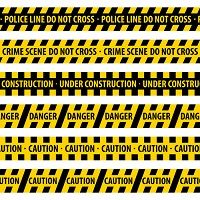Article
Does the Stress of Living in High-Crime Neighborhoods Bring on Asthma?
Author(s):
Living in a neighborhood with high rates of crime, both violent and crimes of property, appears linked to the prevalence and severity of childhood asthma, a study of Mexican American children in Chicago found.

Mexican American children living in high crime neighborhoods are more likely to have and die from asthma than those in lower crime areas, according to a recent study. The study was published in the November, 2016 edition of the Annals of Allergy, Asthma and Immunology and was conducted by Kamal Eldeirawi, PhD, RN, of the Department of Health Systems Science in the College of Nursing at the University of Illinois in Chicago, IL, and colleagues.
“The aims of this study were to examine associations of neighborhood crime with the odds of asthma and asthma-related outcomes in Mexican American children and to assess whether these associations are explained or modified by individual- and neighborhood-level characteristics,” say the authors. They note that Mexican American children make up one of the fastest growing segments in the US, and that they are underrepresented in research.
The data on 2,023 children was drawn from the Study of Asthma in Children of Mexican Descent (SACMD) for this cross-sectional study. The researchers report, “The proportions of children with lifetime physician diagnosis of asthma, lifetime wheezing, and current wheezing were 7.3%, 17.3%, and 6.4%, respectively.”
They go on to say that in this sample, they “found that greater neighborhood property crime was significantly associated with increased odds of parent-reported asthma and asthma-related outcomes,” and that “increased neighborhood violent crime was associated with increased odds of lifetime wheezing and asthma-related ED [emergency department] visits.”
Factors such as country of birth, the presence of a smoker in the home, and family history allergy did not explain nor modify the associations between crime and asthma in this study, leading the researchers to say, “These results suggest that the influence of neighborhood crime on respiratory health of Mexican American children is direct, deleterious, and nondiscriminating with regard to environmental and family history.”
The authors suggest that future studies should examine interventions and the use of resources to attenuate the association between asthma in children and crime. They conclude, “In the spirit of building a culture of health for all, examining the under appreciated association between neighborhood crime and asthma outcomes shifts the intervention points to upstream factors that produce disparate incidence of crime at the neighborhood level.”
Related Coverage:
What Can Early-Life Vitamin D Levels Tell Us About Allergy-Related Outcomes?
High Cost of Asthma Due to Traffic Pollution Estimated
True Colors: Exploring the Roles of Race and Ethnicity in Medicine




